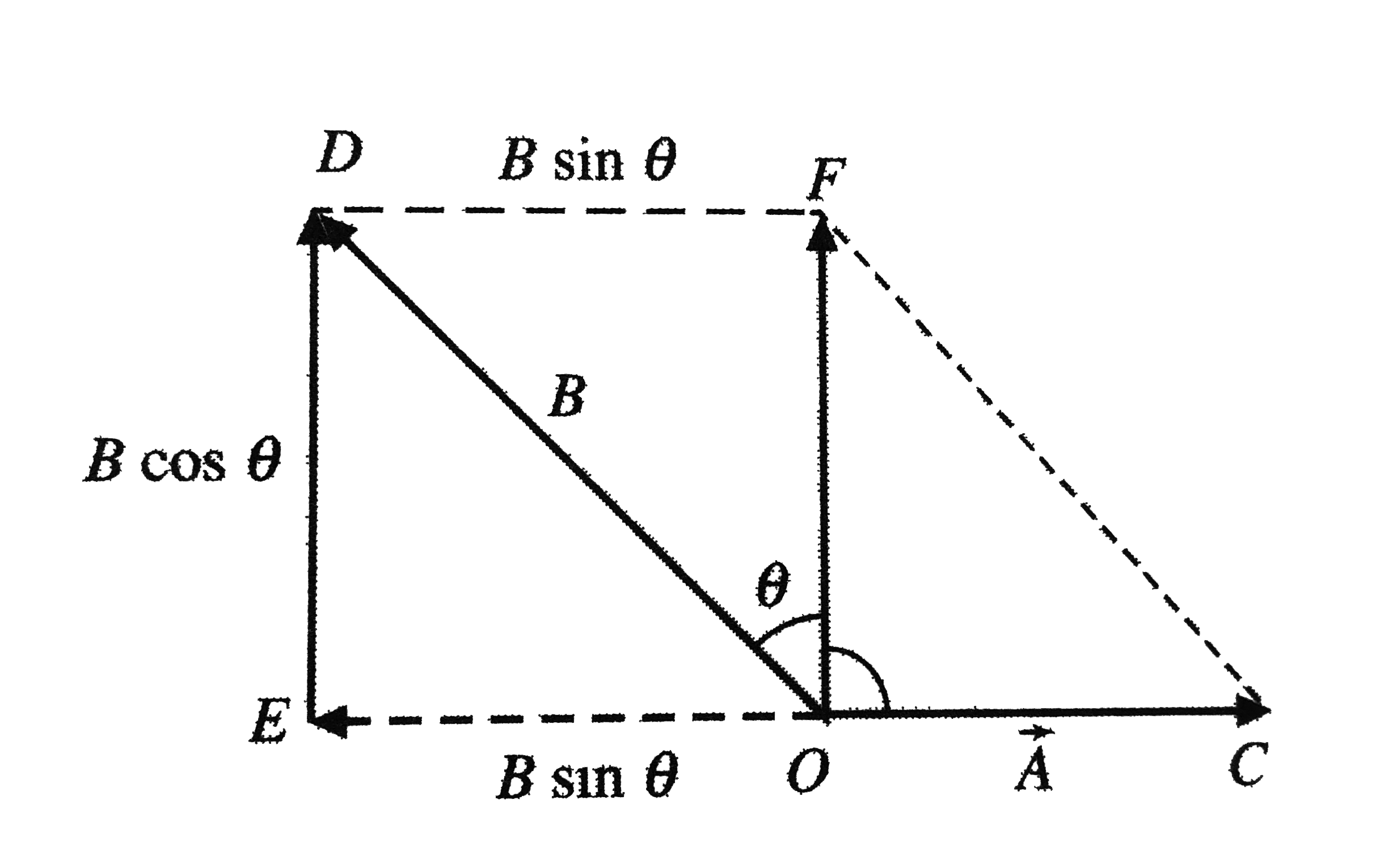Two vectors, both equal in magnitude, have their resultant equal in magnitude of the either. Find the angle between the two vectors.
60∘
90∘
105∘
120∘
The correct Answer is:4
To solve the problem of finding the angle between two vectors of equal magnitude whose resultant is also equal in magnitude to either of the vectors, we can follow these steps:
1. Define the Vectors:
Let the two vectors be →A and →B. Given that both vectors are equal in magnitude, we can denote their magnitudes as:
|→A|=|→B|=A
2. Resultant Magnitude:
According to the problem, the magnitude of the resultant vector →R is equal to the magnitude of either vector:
|→R|=A
3. Use the Formula for Resultant of Two Vectors:
The magnitude of the resultant vector →R when adding two vectors →A and →B can be calculated using the formula:
|→R|=√|→A|2+|→B|2+2|→A||→B|cosθ
Substituting the magnitudes:
|→R|=√A2+A2+2A⋅Acosθ
4. Simplify the Equation:
This simplifies to:
|→R|=√2A2+2A2cosθ
Since |→R|=A, we can set the two expressions equal:
A=√2A2+2A2cosθ
5. Square Both Sides:
Squaring both sides gives:
A2=2A2+2A2cosθ
6. Rearranging the Equation:
Rearranging the equation leads to:
A2−2A2=2A2cosθ
−A2=2A2cosθ
7. Solve for Cosine:
Dividing both sides by 2A2 gives:
cosθ=−12
8. Find the Angle:
The angle θ that corresponds to cosθ=−12 is:
θ=120∘
Final Answer:
The angle between the two vectors is 120∘.
---
Let the two vectors be →A and →B. Given that both vectors are equal in magnitude, we can denote their magnitudes as:
|→A|=|→B|=A
According to the problem, the magnitude of the resultant vector →R is equal to the magnitude of either vector:
|→R|=A
The magnitude of the resultant vector →R when adding two vectors →A and →B can be calculated using the formula:
|→R|=√|→A|2+|→B|2+2|→A||→B|cosθ
Substituting the magnitudes:
|→R|=√A2+A2+2A⋅Acosθ
This simplifies to:
|→R|=√2A2+2A2cosθ
Since |→R|=A, we can set the two expressions equal:
A=√2A2+2A2cosθ
Squaring both sides gives:
A2=2A2+2A2cosθ
Rearranging the equation leads to:
A2−2A2=2A2cosθ
−A2=2A2cosθ
Dividing both sides by 2A2 gives:
cosθ=−12
The angle θ that corresponds to cosθ=−12 is:
θ=120∘
The angle between the two vectors is 120∘.
Topper's Solved these Questions
- BASIC MATHEMATICS USED IN PHYSICS &VECTORS BOOK - ALLENCHAPTER - BASIC MATHEMATICS USED IN PHYSICS &VECTORS EXERCISE - RESOLUTION OF VECTOR
8 Videos
- BASIC MATHEMATICS USED IN PHYSICS &VECTORS BOOK - ALLENCHAPTER - BASIC MATHEMATICS USED IN PHYSICS &VECTORS EXERCISE - DOT PRODUCT
20 Videos
- BASIC MATHEMATICS USED IN PHYSICS &VECTORS BOOK - ALLENCHAPTER - BASIC MATHEMATICS USED IN PHYSICS &VECTORS EXERCISE - DEFINITION & TYPES OF VECTOR
6 Videos
- CENTRE OF MASSBOOK - ALLENCHAPTER - CENTRE OF MASSEXERCISE - EXERCISE-V B
19 Videos
Similar Questions
Two vectors of equal magnitude are acting through a point. The magnitude of resultant is equal to the magnitude of either vectoe. Find the angle between the vectors.
View SolutionTwo vectors of equal magnitudes have a resultant equle to either of them, than the angel between them will be
View SolutionTwo equal vector have a resultant equal to either of them, then the angle between them will be:
View SolutionTwo equal vector have a resultant equal to either of them, then the angle between them will be:
View SolutionTwo equal vector have a resultant equal to either of them, then the angle between them will be:
View SolutionIf magnitude of the resultant of two vectors equal of magnitude, is equal to the magnitude of either of the vectors, what is the angle between them ?
View SolutionTwo vectors have magnitudes 6 and 8 units, respectively. Find the magnitude of the resultant vector if the angle between vectors is (a) 60∘ (b) 90∘ and ( c ) 120∘.
View SolutionThe resultant of two vectors →A and →B is perpendicular to the vector →A and its magnitude is equal to half of the magnitude of the vector →B. Find out the angles between →A and →B.
 .
.
View SolutionTwo forces with equal magnitudes F act on a body and the magnitude of the resultant force is F /3. The angle between the two forces is
View SolutionIf the magnitudes of two vectors are 3 and 4 and magnitude of their scalar product is 6 what is the angle between the vectors ?
View Solution
